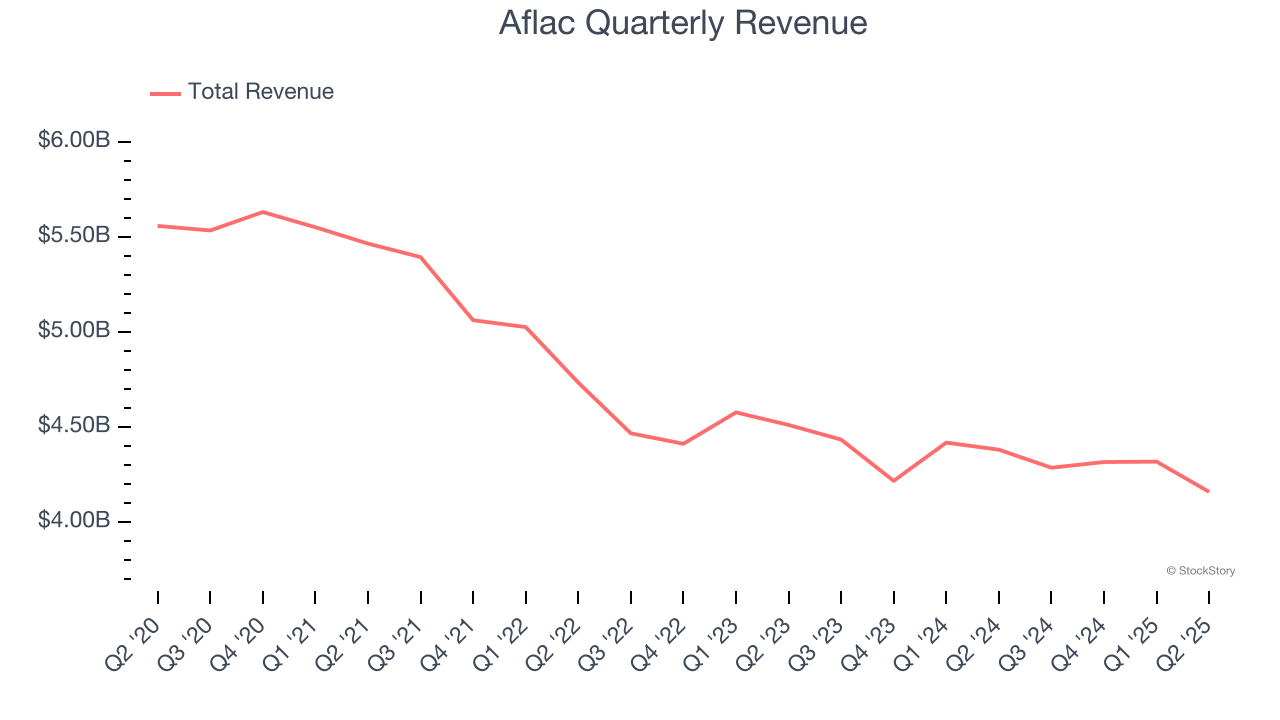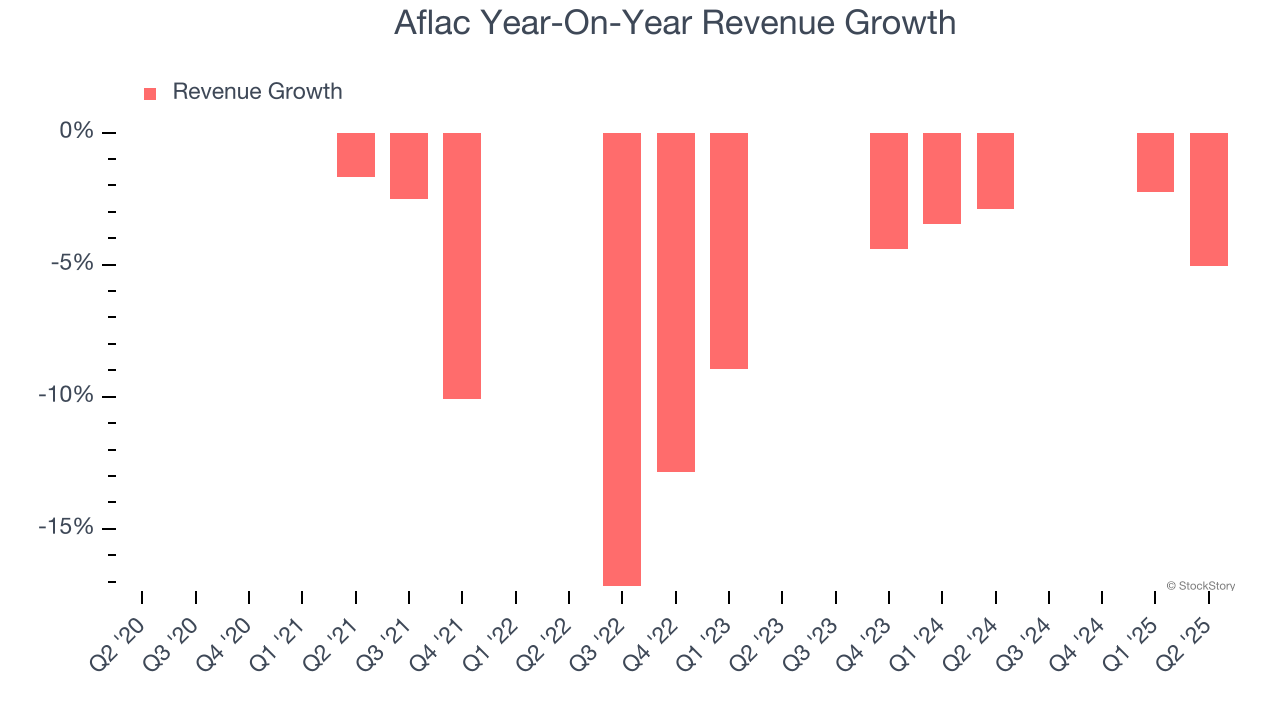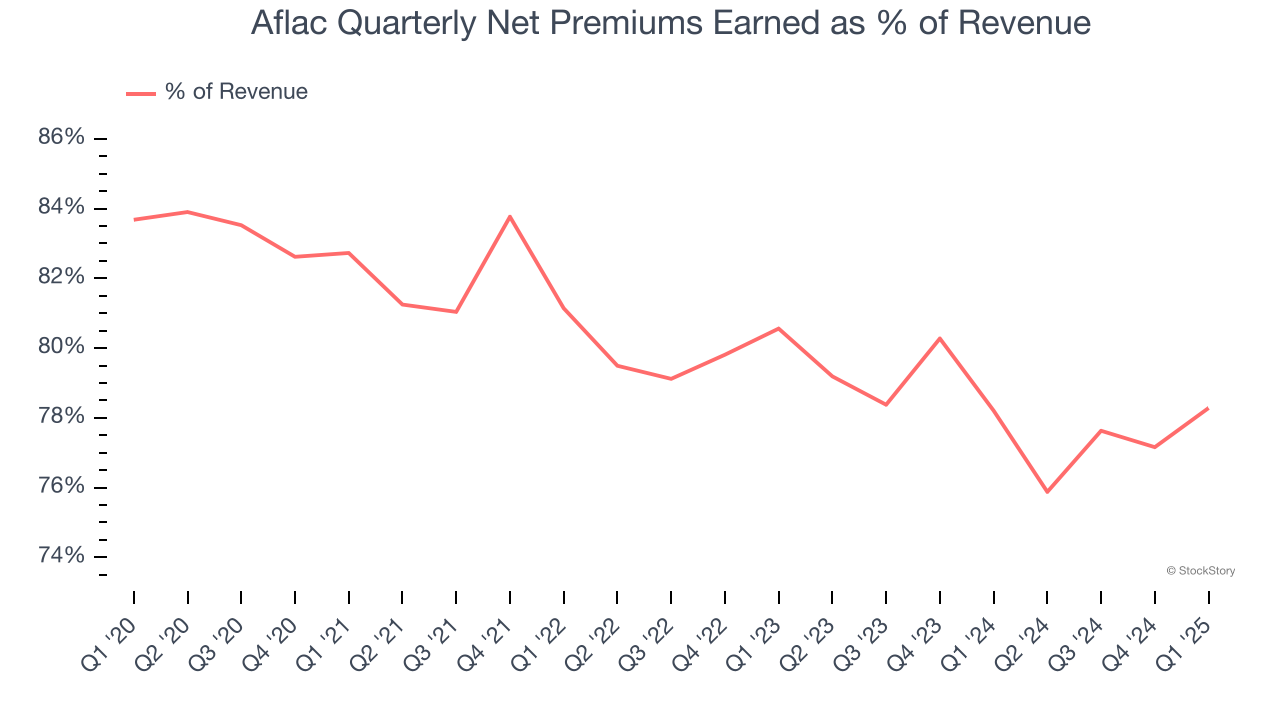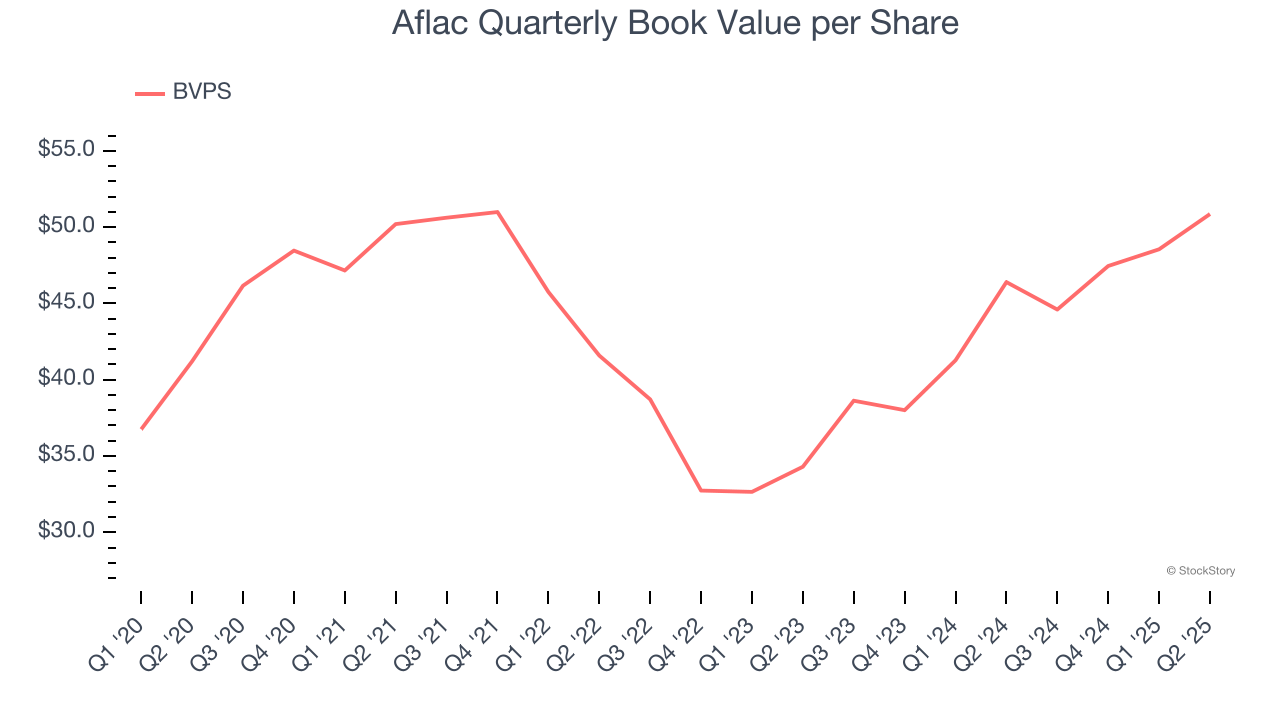
Supplemental insurance provider Aflac (NYSE: AFL) missed Wall Street’s revenue expectations in Q2 CY2025, with sales falling 5.1% year on year to $4.16 billion. Its non-GAAP profit of $1.11 per share was 34.9% below analysts’ consensus estimates.
Is now the time to buy Aflac? Find out by accessing our full research report, it’s free.
Aflac (AFL) Q2 CY2025 Highlights:
- Revenue: $4.16 billion vs analyst estimates of $4.40 billion (5.1% year-on-year decline, 5.5% miss)
- Pre-Tax Profit Margin: 19.8% (26.3 percentage point year-on-year decrease)
- Adjusted EPS: $1.11 vs analyst expectations of $1.71 (34.9% miss)
- Market Capitalization: $53.48 billion
Commenting on the company's results, Aflac Incorporated Chairman and Chief Executive Officer Daniel P. Amos stated: "Aflac delivered solid earnings for the quarter and the first six months. We have continued to actively concentrate on generating profitable growth in the U.S. and Japan with distribution strategies and refreshed products. We believe our strategy will continue to create long-term value for shareholders."
Company Overview
Known for its iconic duck mascot that has quacked "Aflac!" in commercials since 2000, Aflac (NYSE: AFL) provides supplemental health and life insurance policies that pay cash benefits directly to policyholders for expenses not covered by their primary insurance.
Revenue Growth
Insurance companies generate revenue three ways. The first is the core insurance business itself, represented in the income statement as premiums earned. The second source is investment income from investing the “float” (premiums collected but not yet paid out as claims) in assets such as fixed-income assets and equities. The third is fees from policy administration, annuities, and other value-added services.
Aflac struggled to consistently generate demand over the last five years as its revenue dropped at a 5.2% annual rate. This was below our standards and suggests it’s a low quality business.

We at StockStory place the most emphasis on long-term growth, but within financials, a half-decade historical view may miss recent interest rate changes, market returns, and industry trends. Aflac’s annualized revenue declines of 2.5% over the last two years suggest its demand continued shrinking.  Note: Quarters not shown were determined to be outliers, impacted by outsized investment gains/losses that are not indicative of the recurring fundamentals of the business.
Note: Quarters not shown were determined to be outliers, impacted by outsized investment gains/losses that are not indicative of the recurring fundamentals of the business.
This quarter, Aflac missed Wall Street’s estimates and reported a rather uninspiring 5.1% year-on-year revenue decline, generating $4.16 billion of revenue.
Net premiums earned made up 80.2% of the company’s total revenue during the last five years, meaning Aflac barely relies on non-insurance activities to drive its overall growth.

Net premiums earned commands greater market attention due to its reliability and consistency, whereas investment and fee income are often seen as more volatile revenue streams that fluctuate with market conditions.
Today’s young investors won’t have read the timeless lessons in Gorilla Game: Picking Winners In High Technology because it was written more than 20 years ago when Microsoft and Apple were first establishing their supremacy. But if we apply the same principles, then enterprise software stocks leveraging their own generative AI capabilities may well be the Gorillas of the future. So, in that spirit, we are excited to present our Special Free Report on a profitable, fast-growing enterprise software stock that is already riding the automation wave and looking to catch the generative AI next.
Book Value Per Share (BVPS)
Insurers are balance sheet businesses, collecting premiums upfront and paying out claims over time. Premiums collected but not yet paid out, often referred to as the float, are invested and create an asset base supported by a liability structure. Book value per share (BVPS) captures this dynamic by measuring these assets (investment portfolio, cash, reinsurance recoverables) less liabilities (claim reserves, debt, future policy benefits). BVPS is essentially the residual value for shareholders.
We therefore consider BVPS very important to track for insurers and a metric that sheds light on business quality because it reflects long-term capital growth and is harder to manipulate than more commonly-used metrics like EPS.
Aflac’s BVPS grew at a sluggish 4.3% annual clip over the last five years. However, BVPS growth has accelerated recently, growing by 21.8% annually over the last two years from $34.30 to $50.86 per share.

Over the next 12 months, Consensus estimates call for Aflac’s BVPS to grow by 5.4% to $52.33, lousy growth rate.
Key Takeaways from Aflac’s Q2 Results
We struggled to find many positives in these results as its revenue and EPS fell short of Wall Street’s estimates. Overall, this was a weaker quarter. The stock remained flat at $98.92 immediately following the results.
Aflac underperformed this quarter, but does that create an opportunity to invest right now? The latest quarter does matter, but not nearly as much as longer-term fundamentals and valuation, when deciding if the stock is a buy. We cover that in our actionable full research report which you can read here, it’s free.



